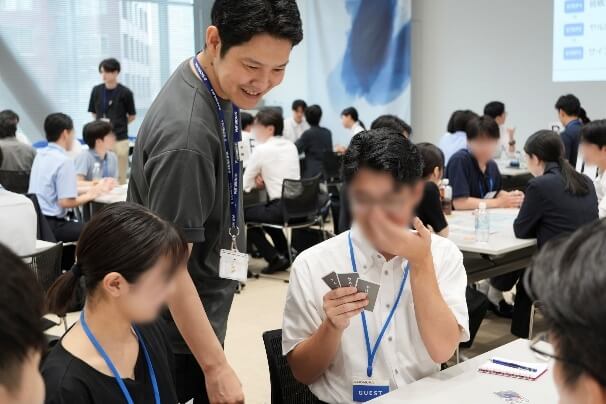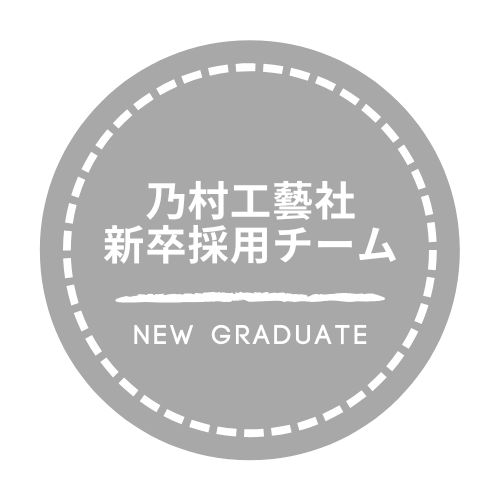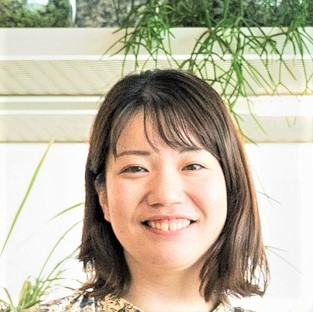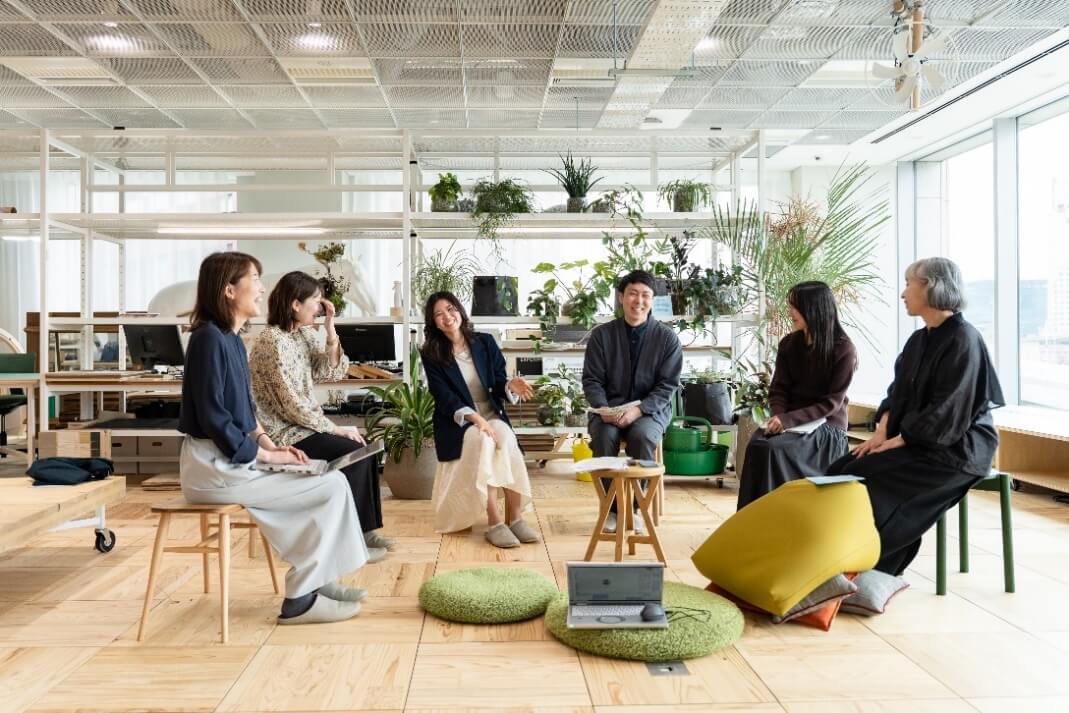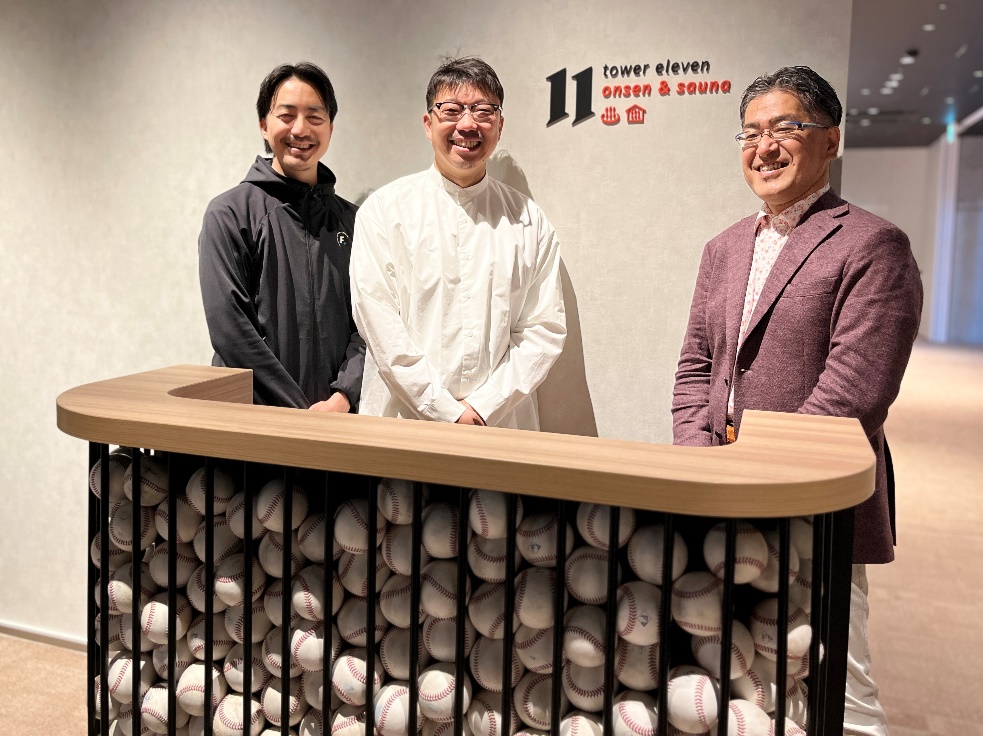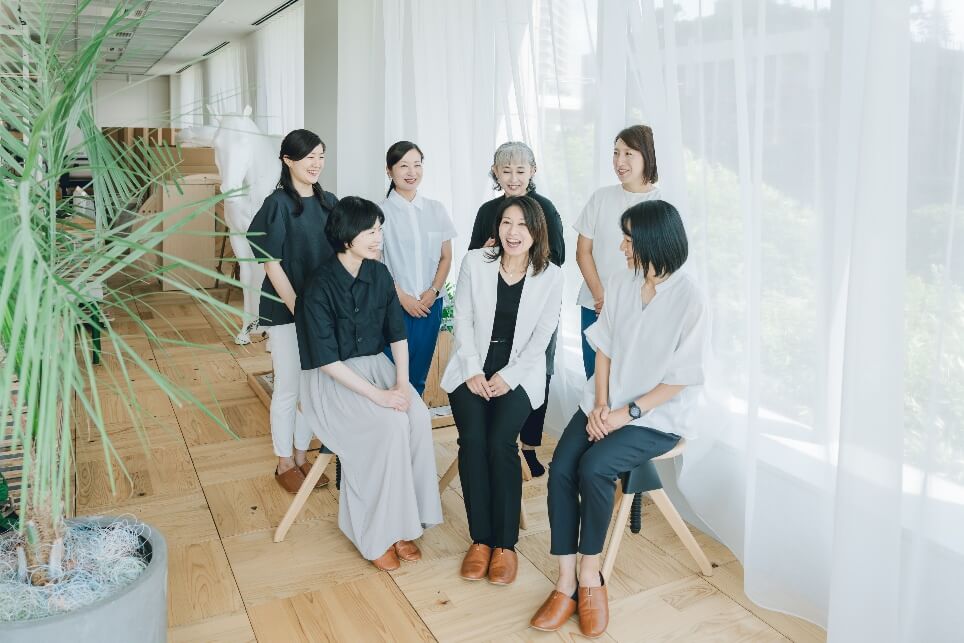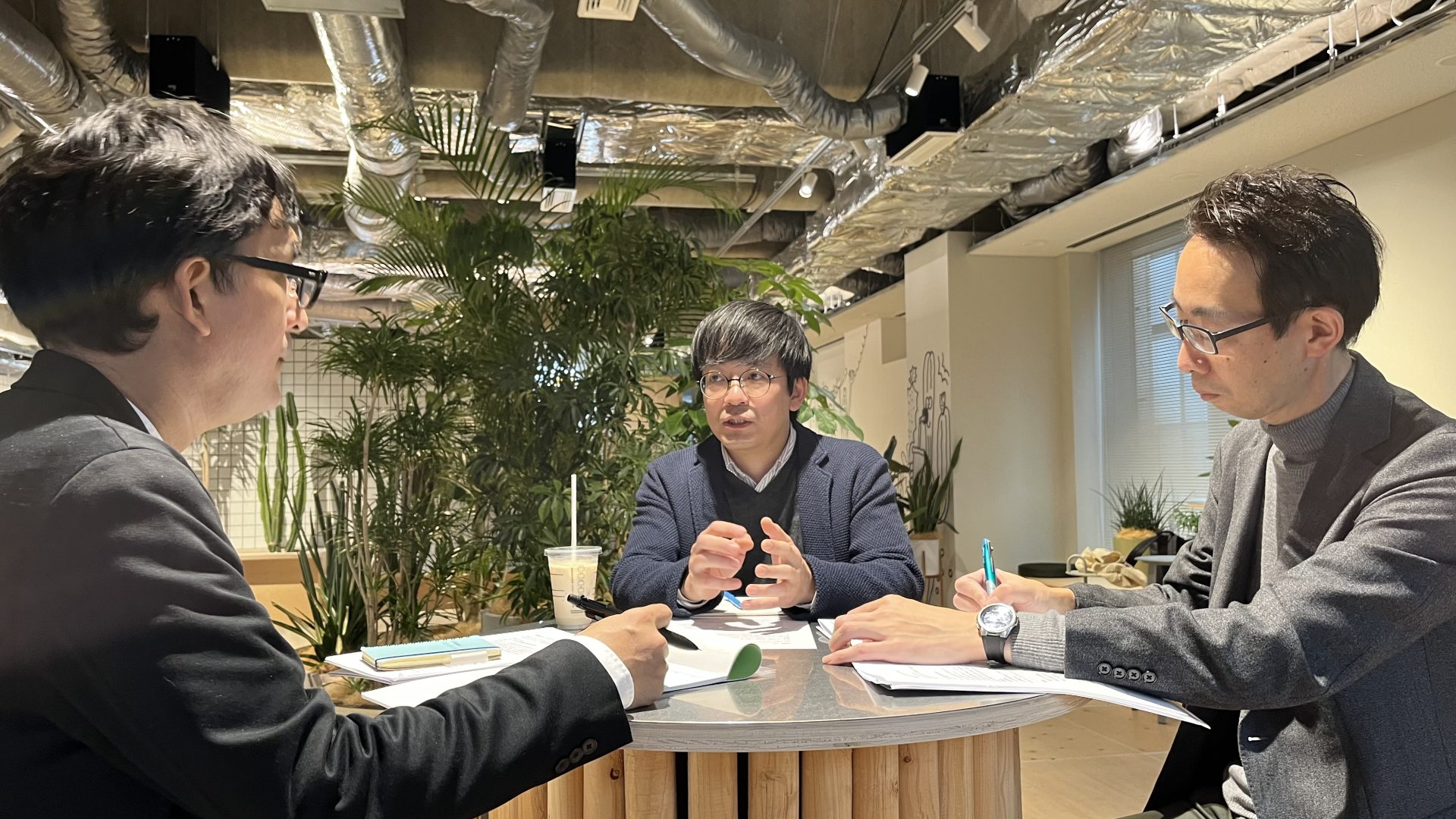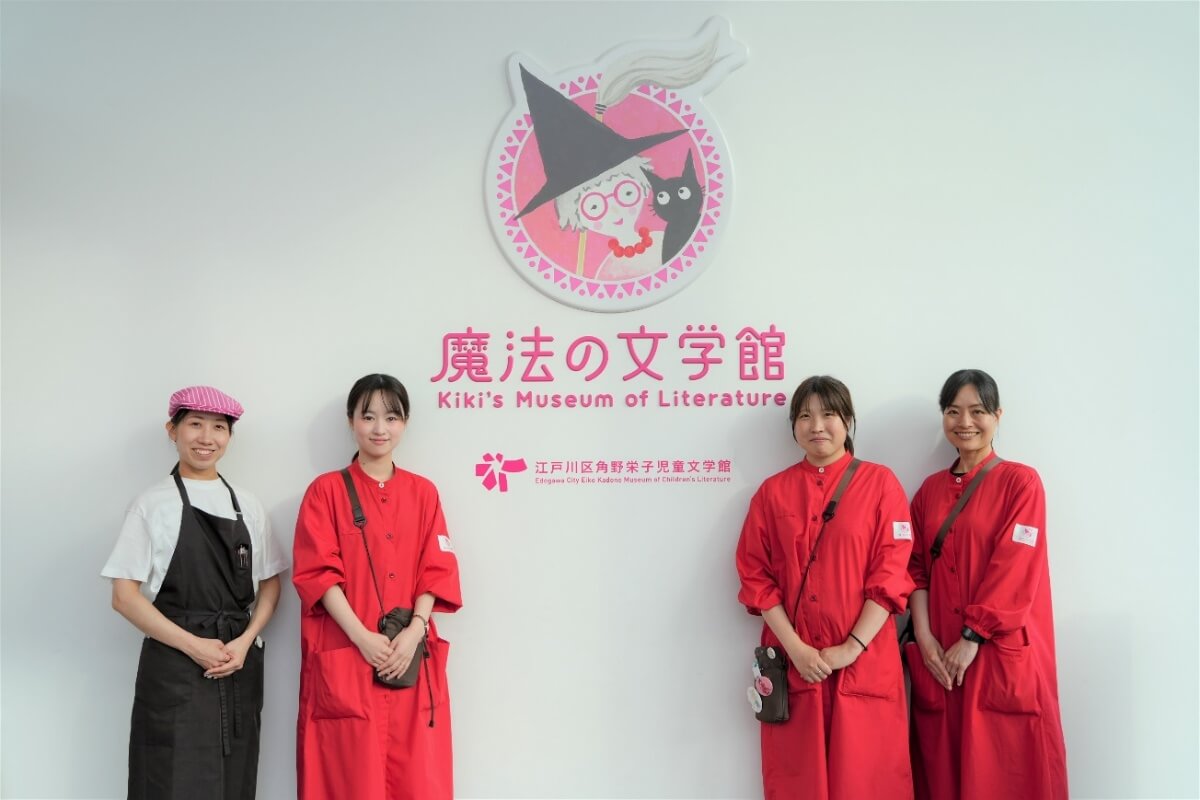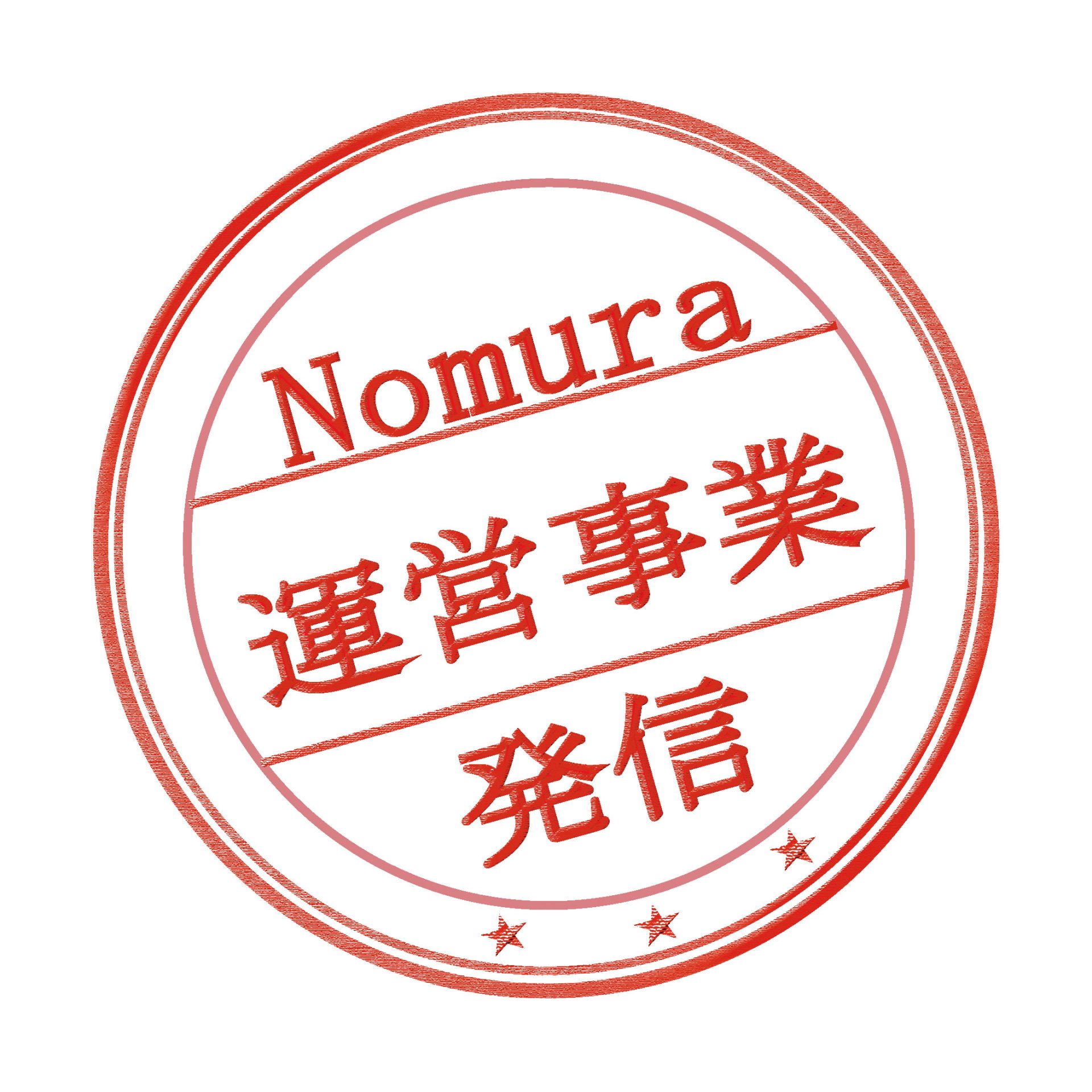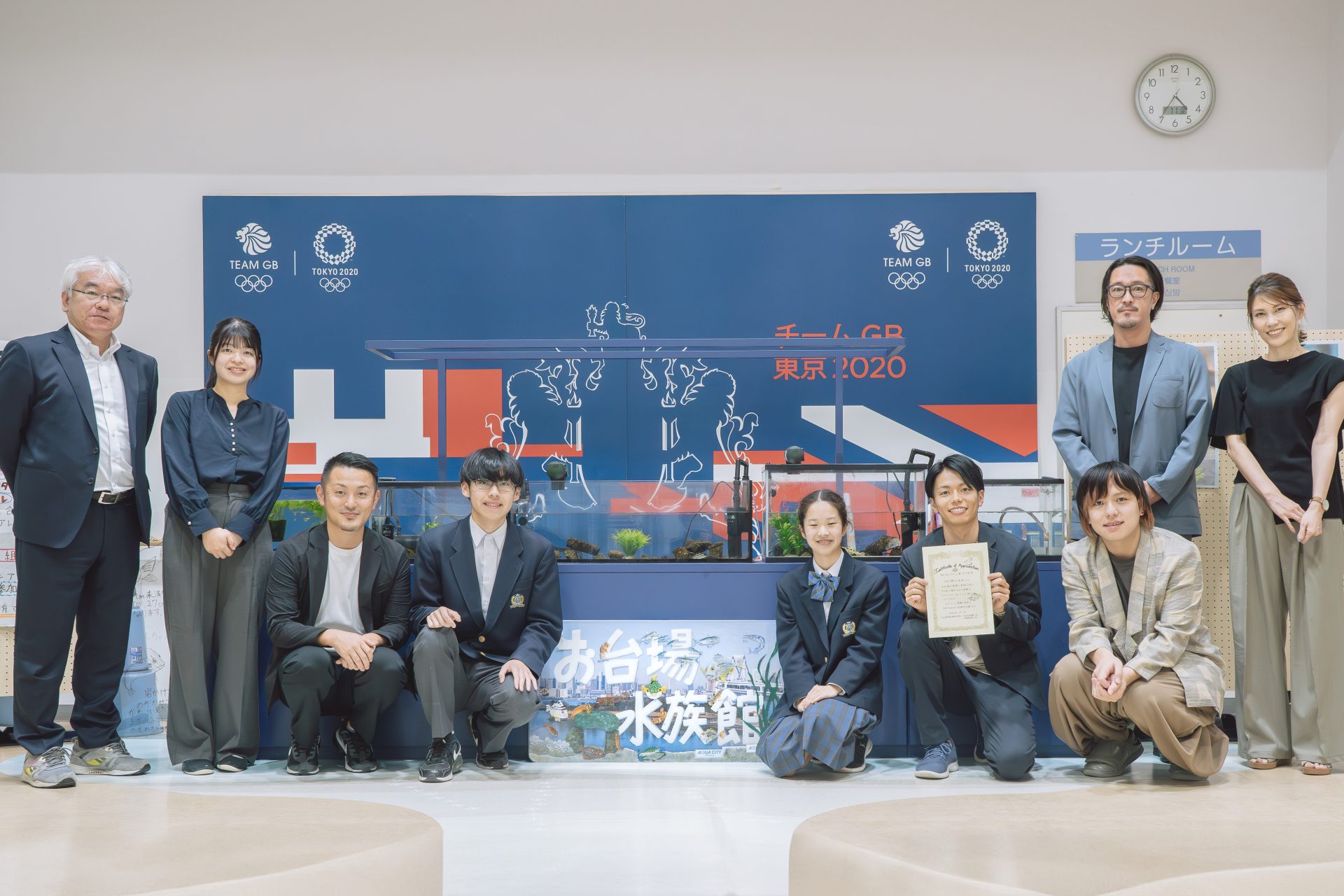
Odaiba Aquarium Project
It started as a student's idea
Creating a school that puts children at the center
2024/12/20
- text and edit by
- Keita Kobayashi
[Interviewer]
Minato City Municipal Elementary and Junior High School Odaiba Gakuen
Principal Kazuhiro Oshima (back row, left)
Minato City Municipal Elementary and Junior High School Odaiba Gakuen Koyo Junior High School
Professor Ayako Tanaka (second from the left in the back row)
Tomoko Eda (third from the right in the front row)
Tokinari Harada (second from the left in the front row)
NOMURA Co., Ltd. Co., Ltd.
Creative Headquarters, Planning and Production Center, Planning Department 1, Room 4
Keita Kobayashi (second from the right in the back row)
Creative Headquarters, Planning and Production Center, Planning Department 2, Room 7
Tetsuyuki Tokumori (front row, right)
Creative Headquarters Creative Production Center No.10 Suzuki Room
Nao Kameda (back row right)
Business Production Headquarters, Second General Affairs Department, New Field Project Development Department, Development Section 2
Kazuyoshi Hikota (front row, left)
Tetsuya Yamabayashi (second from the right in the front row)
The "Odaiba Aquarium" project is being carried out at Minato City Odaiba Gakuen. This initiative, which began as an idea proposed by students and was realized with the cooperation of the local community and businesses, embodies the creation of a school that puts "children at the center." We spoke to the students who launched the project and school officials about the background and results of the project.
Odaiba Aquarium: A student's idea

Kobayashi
I think it was in this room, but I visited the school to hear about the school's theme of "Children at the Center." At that time, Principal Oshima told me, "Right now, we are thinking about the Odaiba Aquarium." That was over a year ago.
I believe other members of the student council were also involved in creating Odaiba Aquarium, centered around Eda and Harada. Have you noticed any growth among the students, any changes or good points, or any learning that has led to it outside of class?
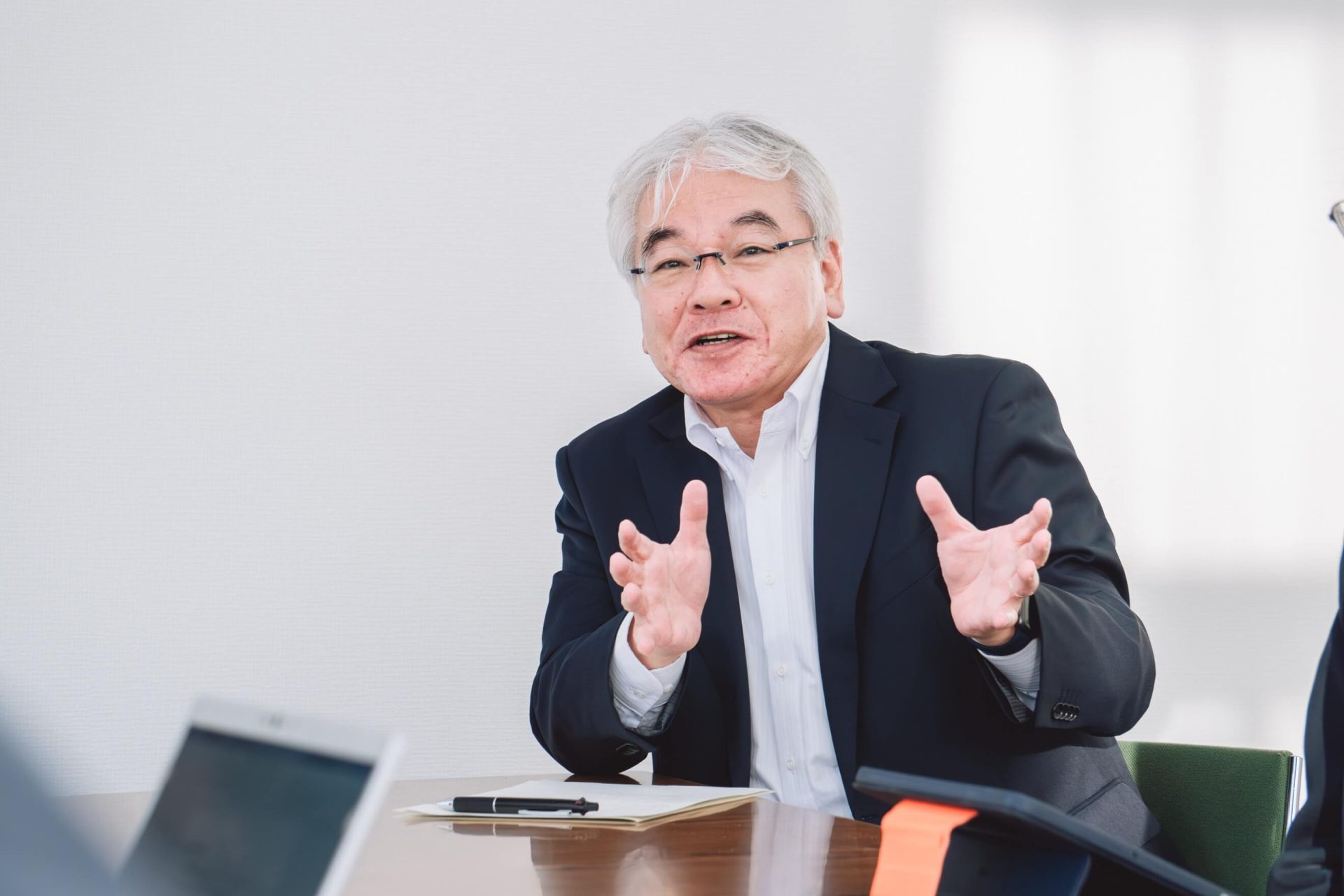
Principal Oshima
When children come up with ideas like "What about this?", adults and the surrounding society respond. This time it took the form of an aquarium. Instead of doing what they themselves want to do, the children come up with ideas like "If we make something like this, it would be good for everyone," and then make it a reality. As a result, everyone said, "This is great!"
What schools should do is listen to the children's opinions, and if it costs money, think about how to allocate the budget. How can we connect the school with educational resources and businesses in the area around the school? I think it's important to think about these things together with the children from an adult's perspective. And it's wonderful for the children to see it take shape.
An aquarium project born from a passion for living creatures
Kobayashi
Thank you. I'm glad to hear such a story. I think that Mr. Eda and Mr. Harada came up with the idea for Odaiba Aquarium, but can you tell us what inspired it?

Eda-san
I have loved living things since I was a child. When I entered Odaiba Gakuen from junior high school, I was excited by the wonderful environment of having the sea right in front of me. I wanted to make the students of Odaiba Gakuen interested in and love the sea and marine life by exhibiting the fish that live in Odaiba, and to help them develop kind hearts.

Harada:
The idea was conceived by Mr. Eda. When I heard about the Odaiba Aquarium from Mr. Eda, I wanted to be involved in this project because I have always loved animals. I attended this elementary school, so the sea was close to me, but I had never thought about keeping marine life at school, so I was very surprised.
Memorable events and connections to elementary and junior high school
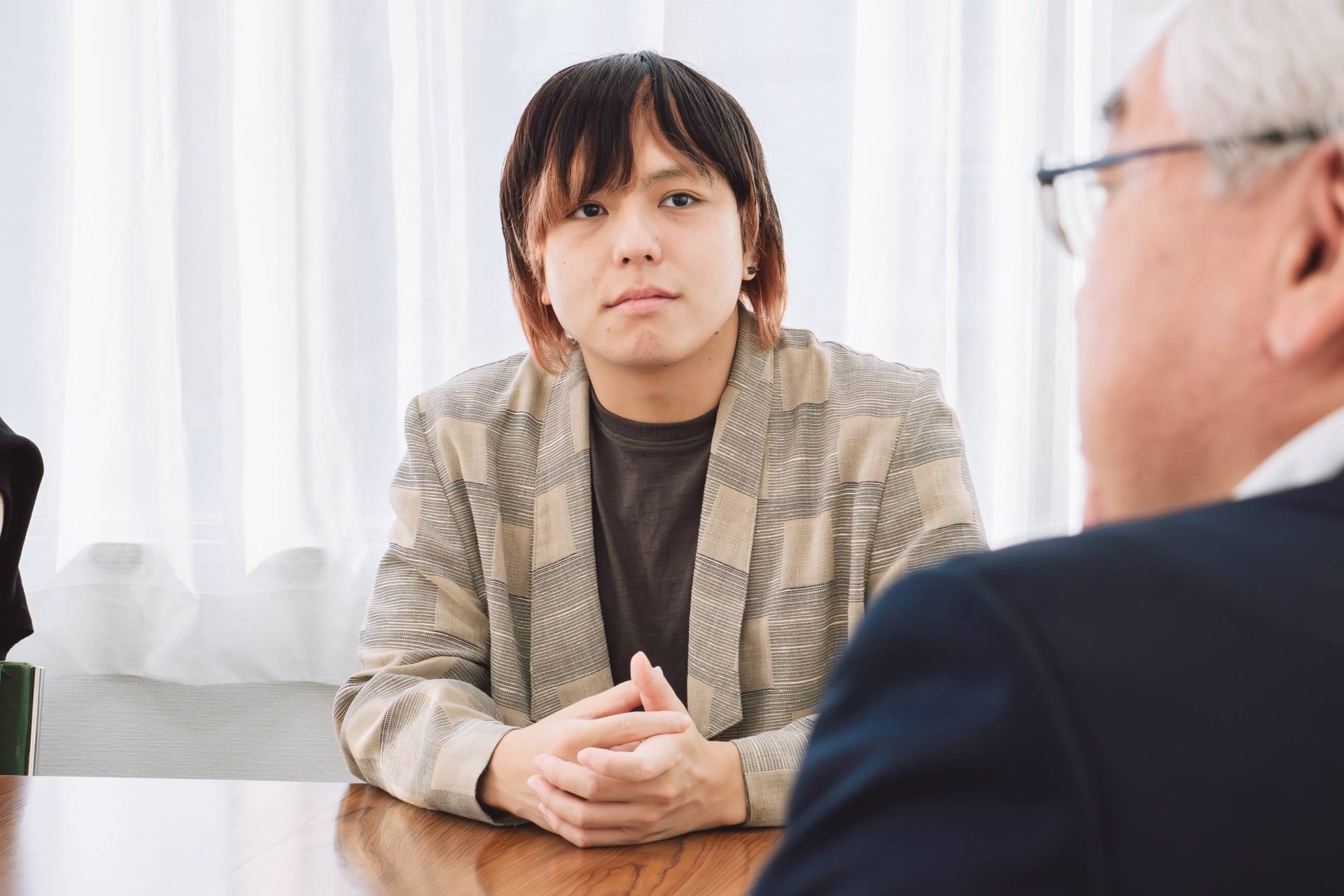
Tokumori
I believe that at first you thought you would make it yourself, and just placed an aquarium at the entrance to the hall, but as you started to get more serious about building from there, what was the most fun part, what did you learn the most, and what did you think was the best part?
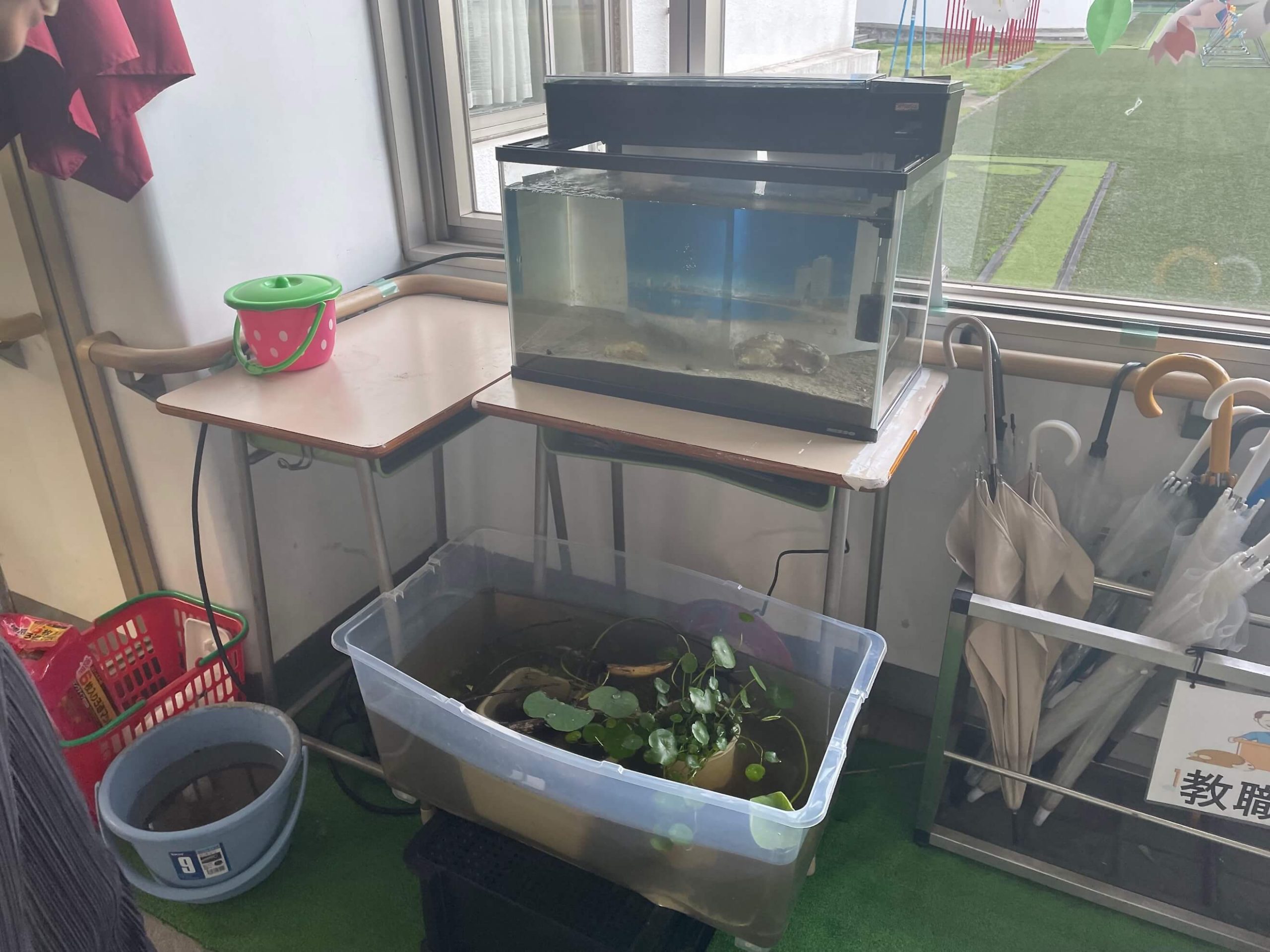 The original display consisted of aquarium tanks lined up on tables at the entrance to the entrance hall.
The original display consisted of aquarium tanks lined up on tables at the entrance to the entrance hall.
Eda-san
There are many, but if I had to choose one, it would be that a fish called the chichibu, which is a near-threatened species of goby, laid eggs. Unfortunately, we were not able to save the eggs, but we were able to observe them developing inside the eggs.
 (Left) "Chichibu" Nickname: Chairman (Right) "Kotohiki" Nickname: Yurikamome Koto
(Left) "Chichibu" Nickname: Chairman (Right) "Kotohiki" Nickname: Yurikamome Koto
We have given the creatures at Odaiba Aquarium unique names to make them more approachable.
Harada:
I wasn't the type to interact much with elementary school kids, but I was really happy when a kid asked me, "What's this fish called?" It was great to feel the connection between elementary school and junior high school.
NOMURA Co., Ltd. 's advice expands possibilities
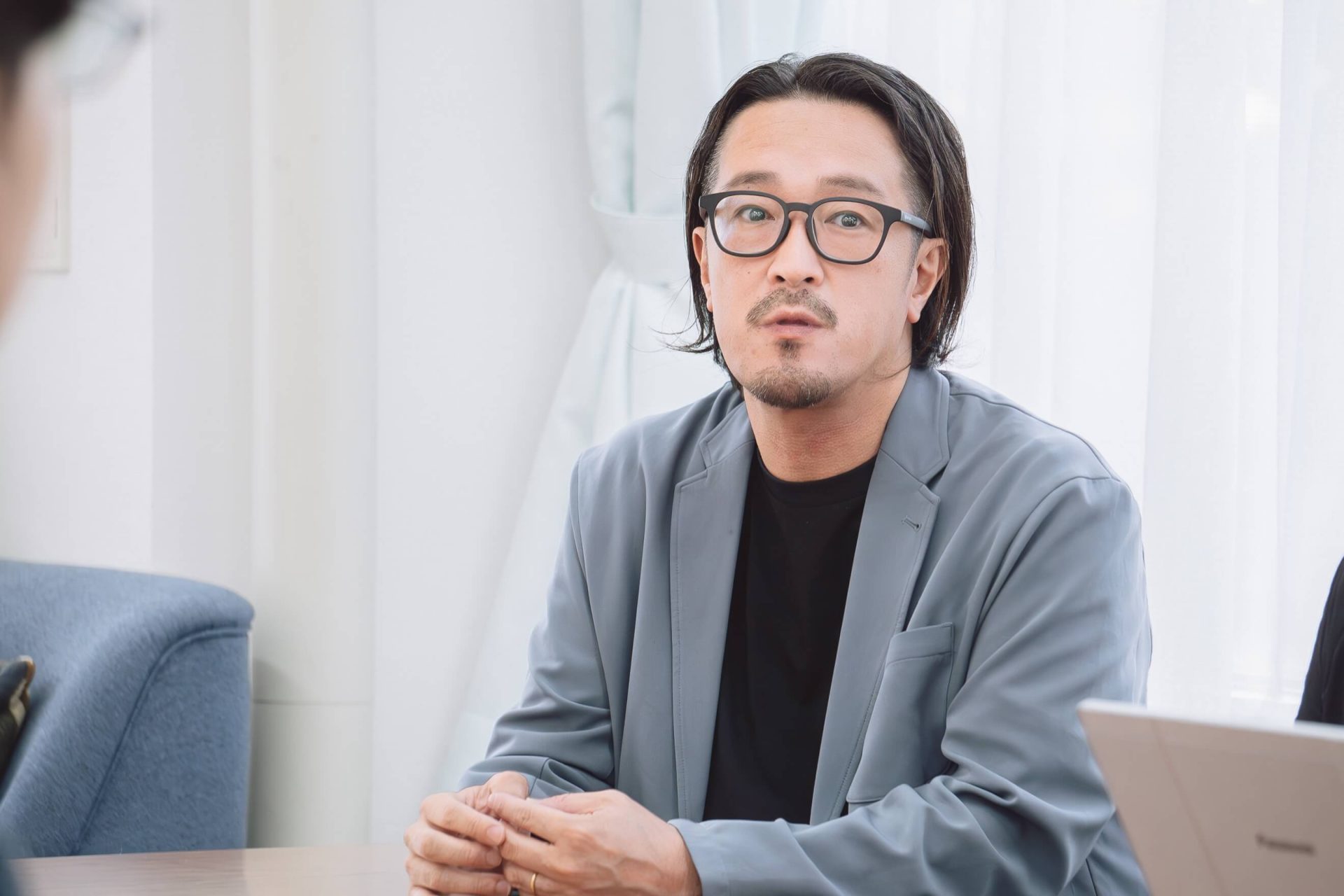
Kobayashi
As we adults began to give advice along the way, could you tell us how your original ideas changed and what aspects of it were helpful?
Eda-san
It turned out to be more concrete than I had imagined, and I was able to create a space to introduce the fish, in addition to exhibiting them. I also received advice on efficient ways to clean the tanks, how to choose filters, and how to raise the fish, so I think I was able to create a better environment for the creatures.
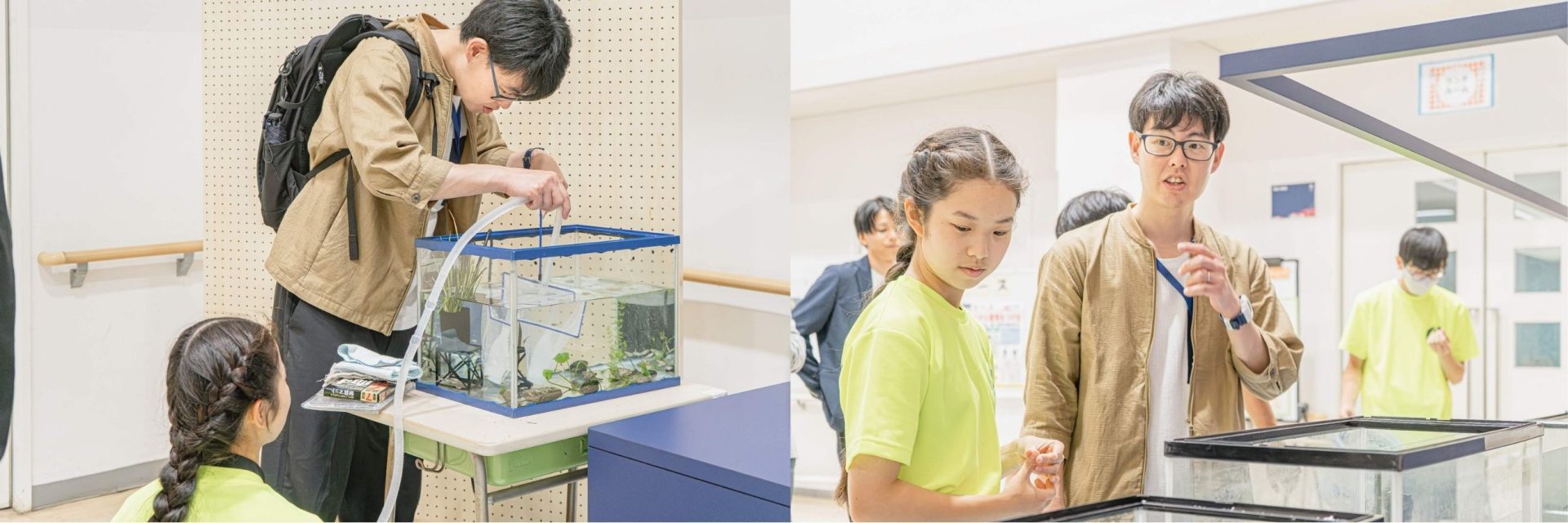 Yusuke Ando (Business Production Headquarters, First General Affairs Department, Public-Private Partnership Project Development Division 1), who has extensive experience and knowledge in aquarium management, provided regular advice.
Yusuke Ando (Business Production Headquarters, First General Affairs Department, Public-Private Partnership Project Development Division 1), who has extensive experience and knowledge in aquarium management, provided regular advice.
Harada:
What especially impressed me was that our ideals, which we would never have been able to realize on our own, were made into reality. For example, I was very happy that the design I had wanted for the floor seats was actually adopted.
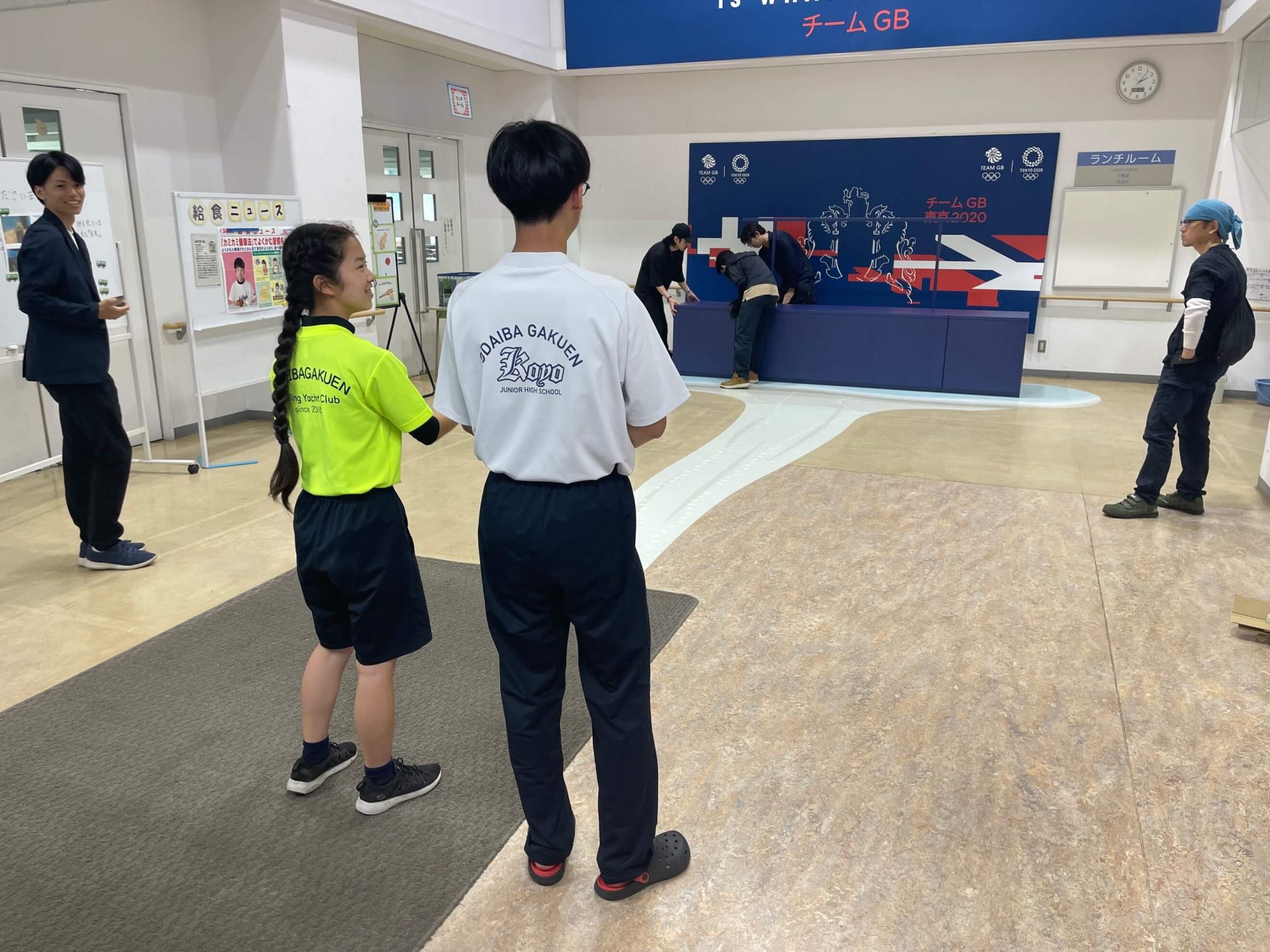 The graphic design for the floor, which I came up with together with Hiroko Inate (Creative Headquarters Creative Production Center No. 10 Suzuki Room), makes it look like the seawater of Odaiba is connected to the school grounds. We worked together to check the design when it was installed.
The graphic design for the floor, which I came up with together with Hiroko Inate (Creative Headquarters Creative Production Center No. 10 Suzuki Room), makes it look like the seawater of Odaiba is connected to the school grounds. We worked together to check the design when it was installed.
Production challenges overcome by the team
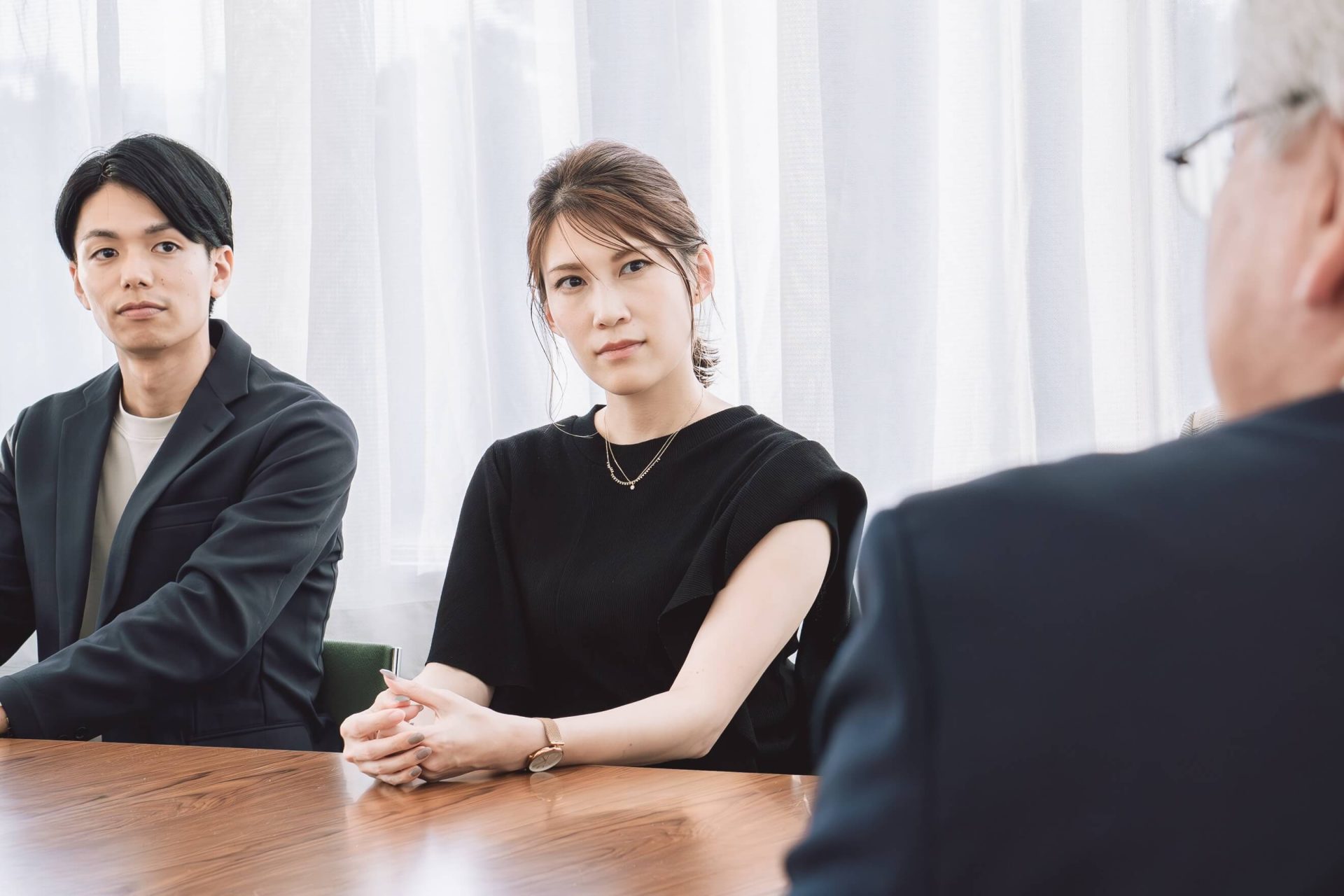
Kameda
For the "My School PR Competition," the students made their own fixtures using paper tubes. Was there anything difficult about it, and did you feel a sense of accomplishment?
* "My School PR Competition"
This is an initiative in which elementary and junior high school students in Minato Ward take the lead in promoting the appeal of their schools and the local area. Representatives from each school plan and implement projects to enhance the appeal of their school and the local area, and then present the results.
Eda-san
The most difficult part was cutting the paper tubes, measuring their length, drilling holes, and connecting them, all by ourselves, with just the five members of the student council. However, we felt a sense of accomplishment when we finished making it, sprayed it with waterproof spray, and stood it up.
 Display fixtures made from upcycled paper tubes were created by students for their presentation at the "My School PR Competition."
Display fixtures made from upcycled paper tubes were created by students for their presentation at the "My School PR Competition."
Paper tube provided by: Sangetsu Co., Ltd.
Harada:
Punching holes in the paper tubes was really hard. The hand pliers used to make holes were very hard. The student council members in our generation were three girls and two boys, so we were short-staffed, and only the two boys were able to punch holes. There was a lot of work to do, and our hands hurt, so it was very difficult. The boys were able to punch holes with the pliers, but the boys were unable to tie the strings or connect the paper tubes, so the girls took on that role. It was good to see the teamwork.
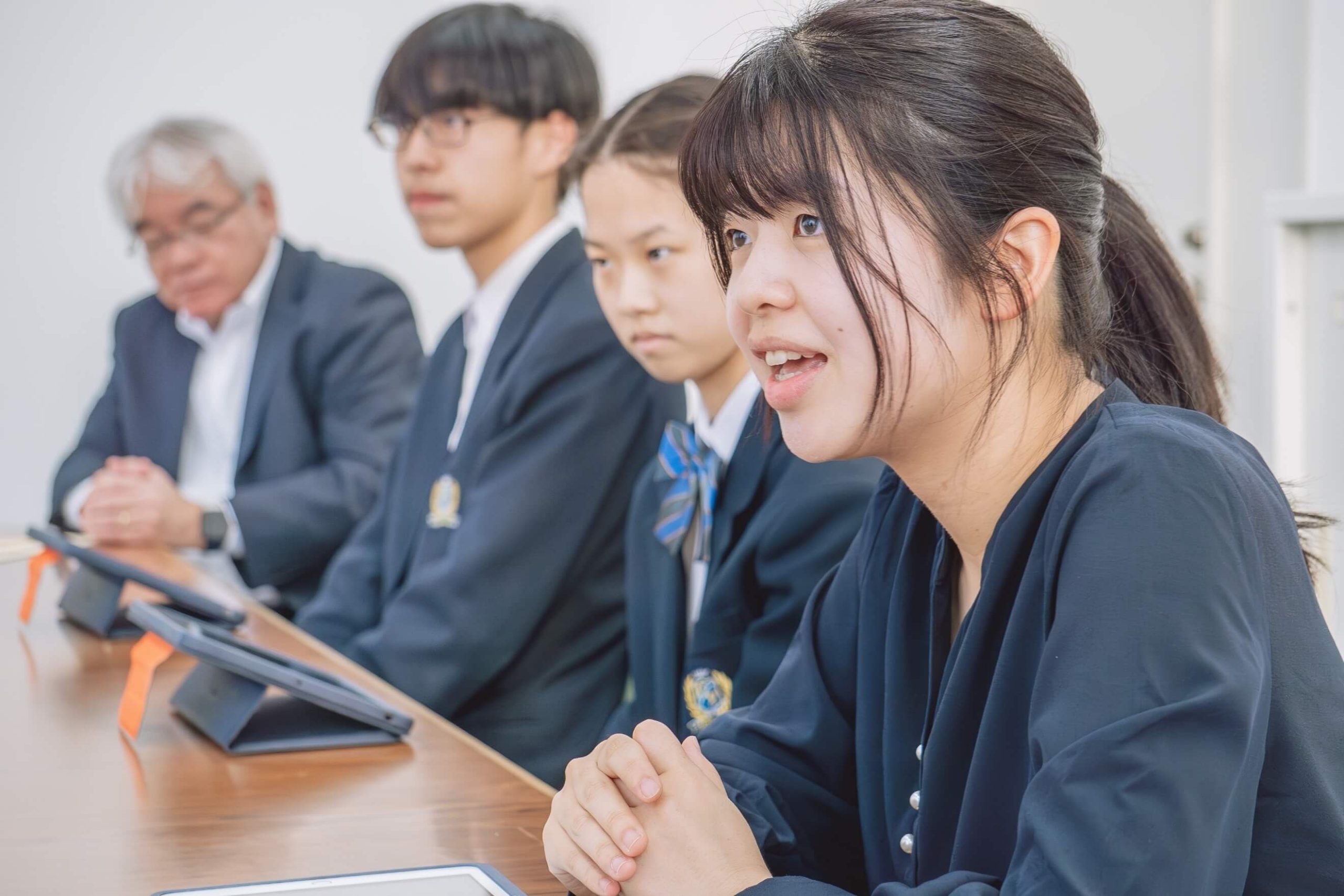
Mr. Tanaka
At the "My School PR Competition," we made it through the first round of presentations and made it to the finals. Unfortunately, we missed out on winning, but we did win the Excellence Award. Afterwards, the people from the Board of Education around us said, "That was great!"
Collaboration with the "Tokyo Bay Odaiba Clean-up Campaign"
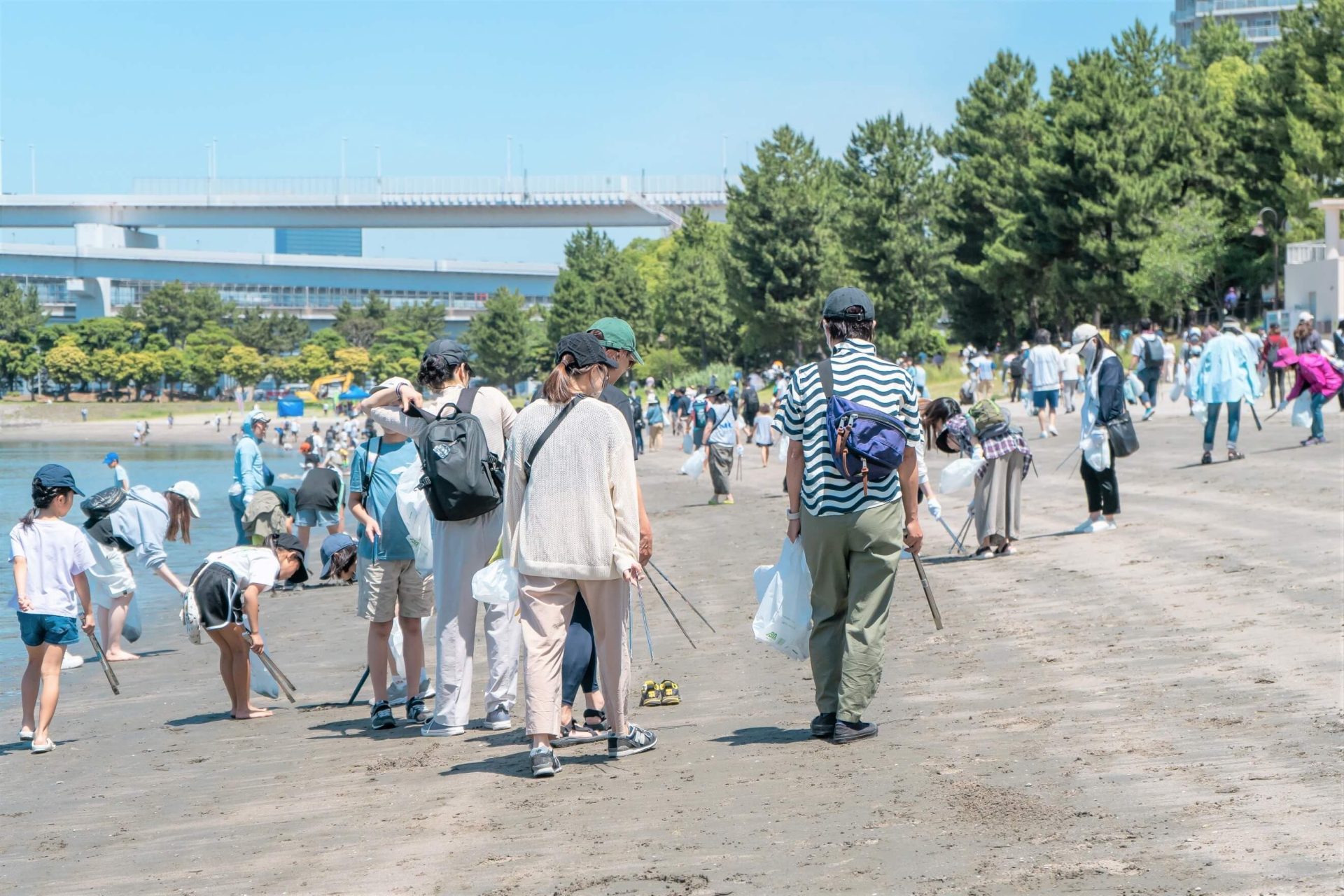 The Tokyo Bay Odaiba Clean-up Campaign is a cleaning activity aimed at protecting the environment of Tokyo Bay, and is held every June, September, and November.
The Tokyo Bay Odaiba Clean-up Campaign is a cleaning activity aimed at protecting the environment of Tokyo Bay, and is held every June, September, and November.
Kobayashi
You participated in the "Tokyo Bay Odaiba Clean-up Operation" and took the trash you picked up and transformed it into the shapes of sea creatures that you had drawn, which is an experience you don't usually get to experience. What were your impressions of this activity?
 The trash collected was then molded into the shapes of sea creatures drawn by the students and upcycled into decorations for the aquarium.
The trash collected was then molded into the shapes of sea creatures drawn by the students and upcycled into decorations for the aquarium.
Production cooperation: REMARE Co., Ltd.
Eda-san
As for garbage, I feel this even though I am a member of the Sailing Yacht Club, but even though the sea around Odaiba is beautiful, the presence of garbage ruins the scenery. I am happy that through this activity, the water environment has changed, the things that have had a negative impact on the fish have been improved, and it has become more beautiful. When we collect fish, we always spend the first 15 minutes picking up garbage. We also make sure to pick up any garbage we find while collecting fish, and we would like to continue doing so in the future.
Kobayashi
Is this a policy that you decided on your own?
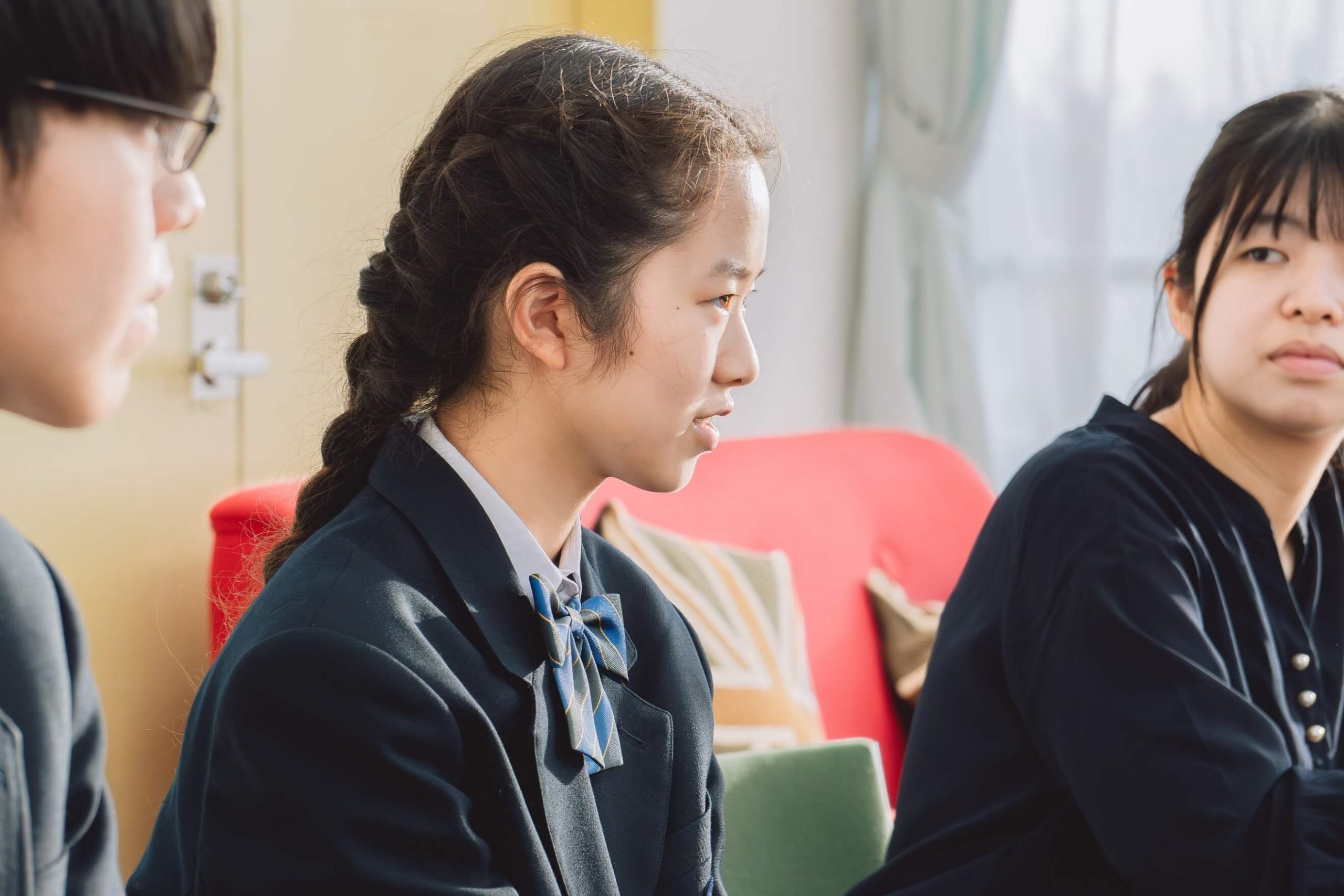
Eda-san
At first, I was just catching fish, but as I was catching them, garbage would inevitably get into the net, and I felt sad when there was more garbage than fish. So I started picking up a bucket full of garbage and putting it in a trash can outside before catching fish. It felt like I was receiving fish, so I wanted to clean up the environment in return.
Harada:
When I actually participated in the Tokyo Bay Odaiba Cleanup Operation, I could see the motivation on the faces of the local people. When I wondered where that motivation came from, I realized it was because they could see the prospect that what they were doing, such as upcycling, would lead to the future. I thought that collecting and utilizing trash in this way was very important, both for environmental protection and to increase motivation.
Educational benefits of involvement with the local community
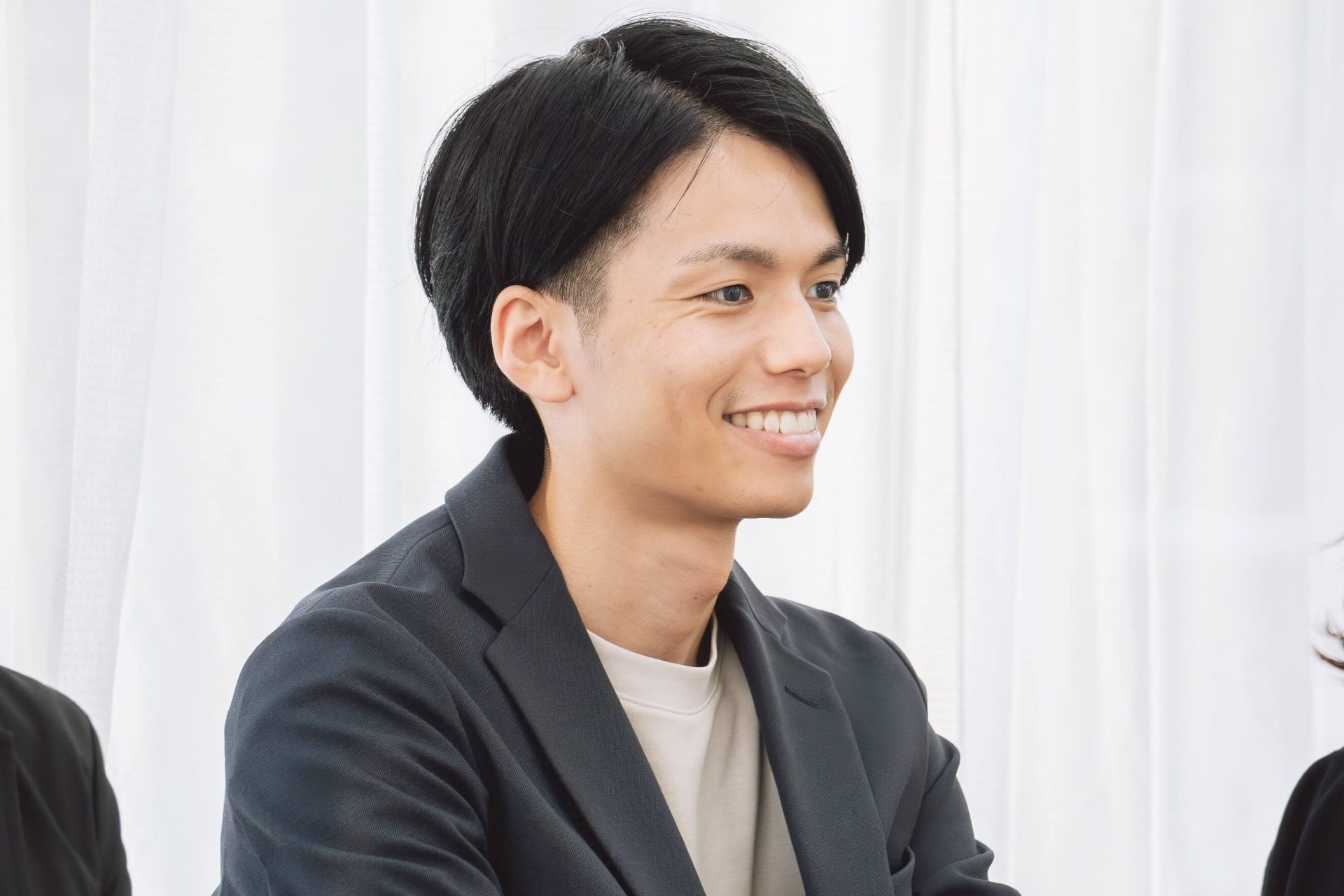
Forest
I would like to ask Principal Oshima and Mr. Tanaka, in terms of working together with the local community, what impact do you think the upcycling part of the Tokyo Bay Odaiba Clean Up Campaign has had from an educational perspective?
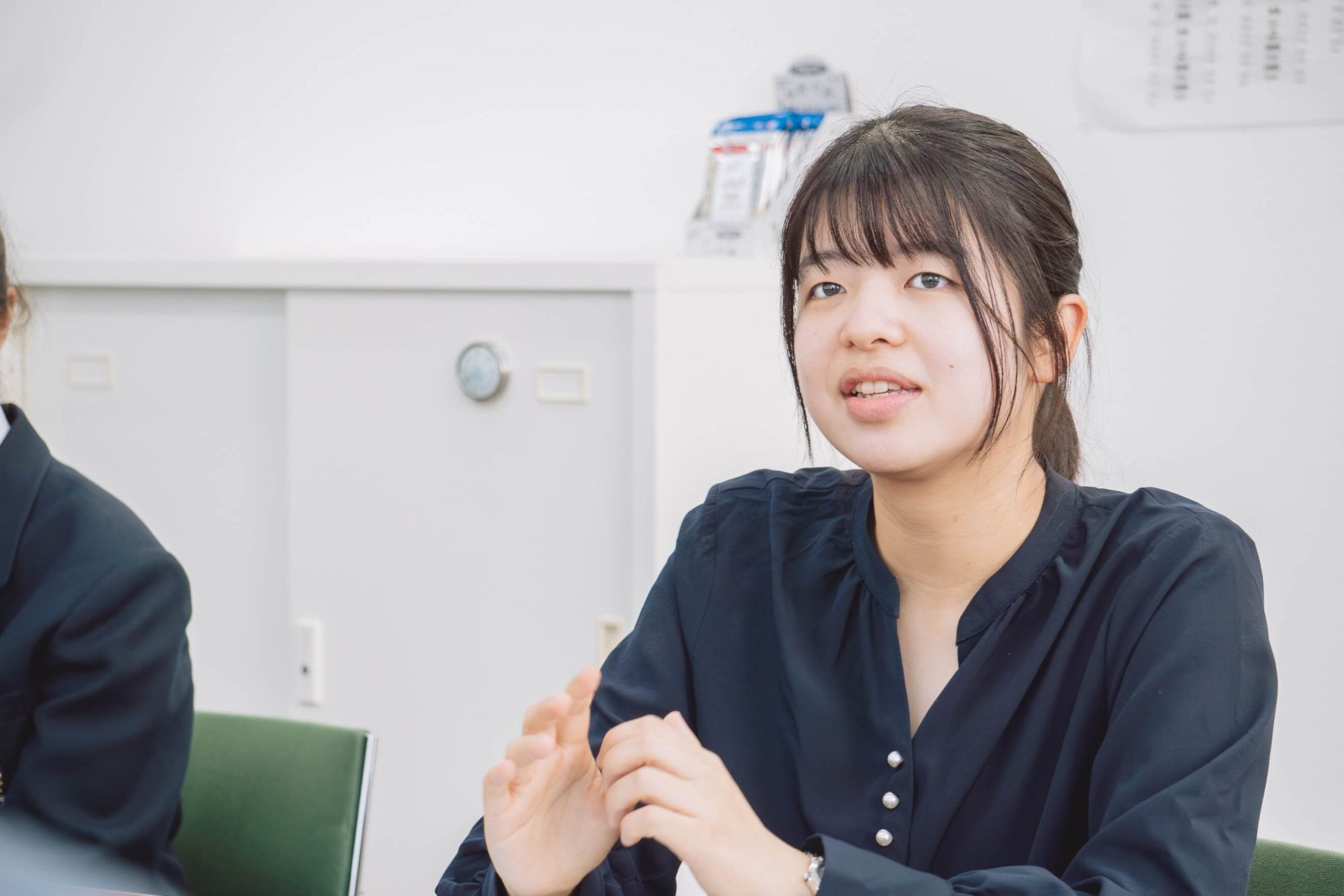
Mr. Tanaka
Originally, each grade had their own ocean-related activities, and the Sailing Yacht Club always participated in the Tokyo Bay Odaiba Clean-up Campaign. This time, we called out to the whole school at the morning assembly, saying, "We're going to make this, so please join us," and we also had the elementary school staff call out to them, and more children became interested and came along. Until now, we simply distributed flyers, but now that we have a concrete purpose, I think it's good for the children too. I myself have found it easier to call out to them, and although I tried to participate about once a year, I get the impression that more children are casually coming along as if it were a game. I feel like the ties have deepened and environmental awareness has improved.
Principal Oshima
The children of Odaiba have had the sea in front of them since they were born, and their connection with it is stronger than we think. Just the mention of the sea makes them excited, they yearn for it, and they see it as a symbol of nature. It is truly a part of their lives, from finding crabs on the tidal flats from an early age, cultivating eelgrass in elementary school, cleaning the water to cultivate seaweed, and working on yachting in junior high school. It was a new perspective for us to see how people around us were able to give shape to ideas like these when we came up with them from our own perspective. It made us realize that children's ideas can contain good things, like diamonds in the rough.
Learning from the students' production skills
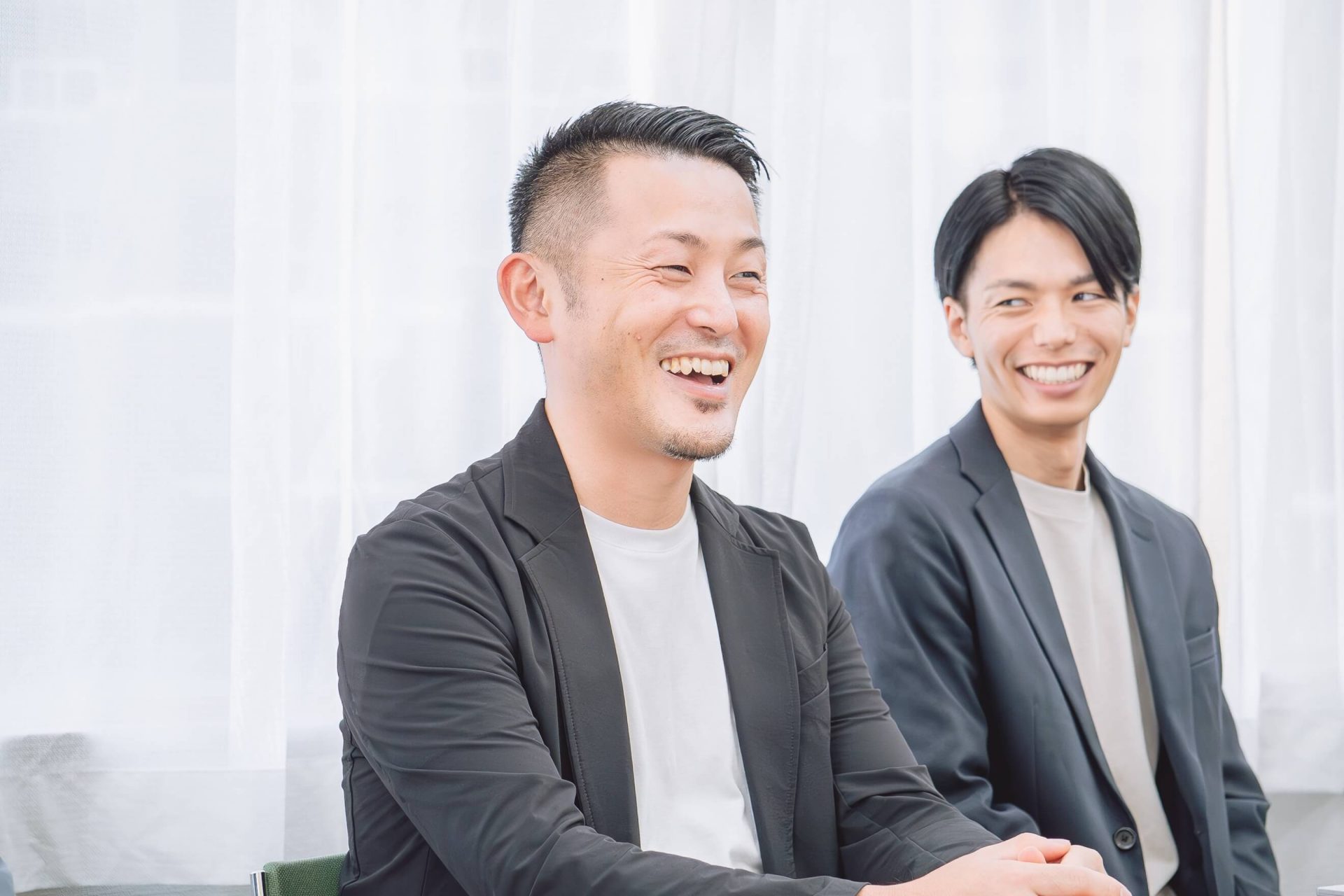
Hikota
At the Business Production Headquarters, we usually consult with our clients and get everyone involved to create work such as planning, design, and construction. In this case, Eda and Harada produced an aquarium. Producing means coming up with a concept, making friends, raising funds, and launching a project. It was a great learning experience for us to see the two of them put this into practice. I think that launching a plan with no budget and bringing it to fruition is a great achievement, regardless of the amount of money involved.
Passing on to the next generation
 The poster that Eda and Harada put together to present the Odaiba Aquarium initiative at the My School PR Competition
The poster that Eda and Harada put together to present the Odaiba Aquarium initiative at the My School PR Competition
Kobayashi
My last question is, Mr. Eda and Mr. Harada have been the ones who have been mainly running this project and will soon be graduating, so could you tell us about your thoughts on how it will be run in the future, your feelings for your juniors, and how you will make it a part of the school's culture?
Eda-san
Since I had to look after the animals every day, I also looked after them on my days off. First of all, I would like to see it taken over in a way that maintains the current state. More students are interested in Odaiba Aquarium, but we also see students who tap on the glass or put their hands in the tanks to touch the fish. In that respect, I would like to see Odaiba Gakuen come up with ways to foster kind hearts among its students.
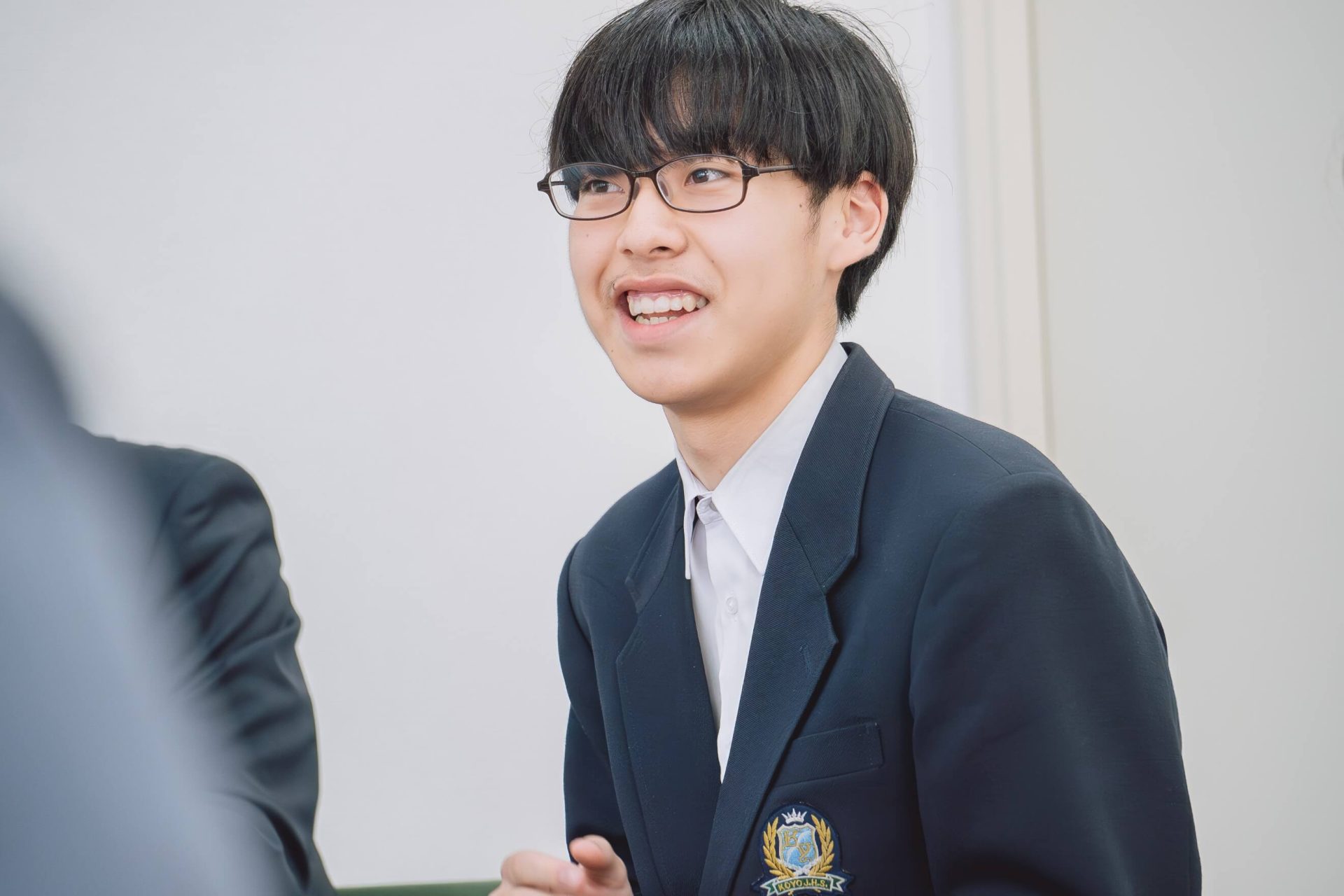
Harada:
That's right. I would be really happy if this could continue as a symbol of the school and as a good culture even after we become adults. However, from our experience, there are some gaps, such as having to take care of the children on holidays and not everyone around you being supportive. I would be happy if the juniors could overcome these challenges and make it a good experience for themselves.
A challenge that opened up new possibilities
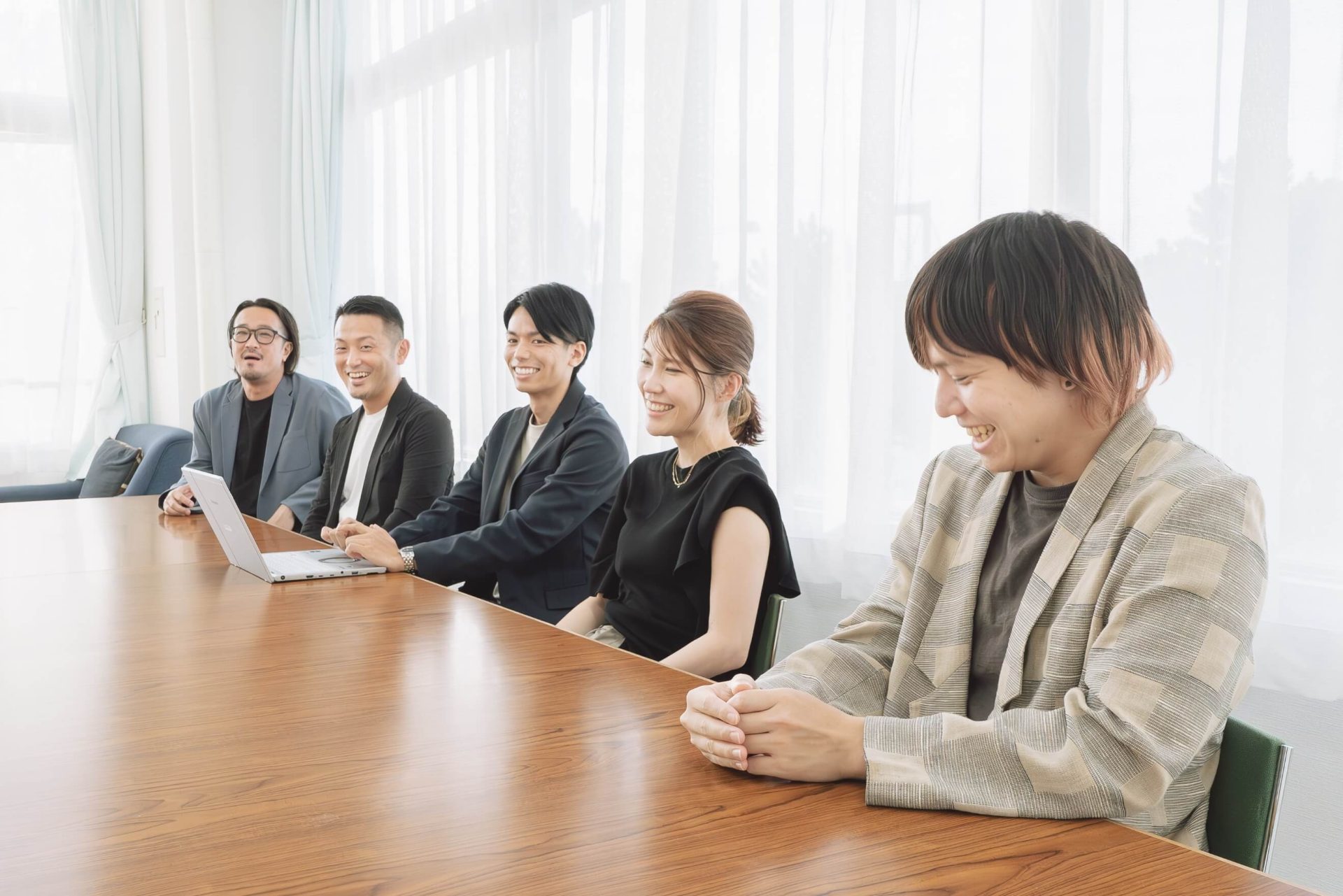
Kobayashi
That's wonderful! It almost makes me cry... I would like all students to read this article. By working on this project, Eda-san, Harada-san, and the student council members must have found new possibilities, thinking, "If we think for ourselves, isn't there still something we can do?" As I listened to the story, I felt that the students were developing a sense of independence, not only in maintaining the aquarium, but also in being able to make their school a better place with their own hands and have even more fun. If there is another opportunity to help, please let us know. We are working right next to you.
[After the interview]
Odaiba Gakuen's "Odaiba Aquarium" project started as a small idea by students and has grown significantly by involving the local community and businesses. This project has had many educational benefits, including raising awareness of environmental protection, promoting interaction between elementary and junior high school students, and fostering teamwork. What is particularly noteworthy is that the students themselves identified problems, came up with solutions, and put them into action. It was by no means an easy road, involving caring for the creatures on their days off and environmental beautification activities, but the experience gained from it is sure to be passed on to the next generation.
Based on the idea of creating a "child-centered" school, this project has made the students' dreams come true and may point to new possibilities for school education.
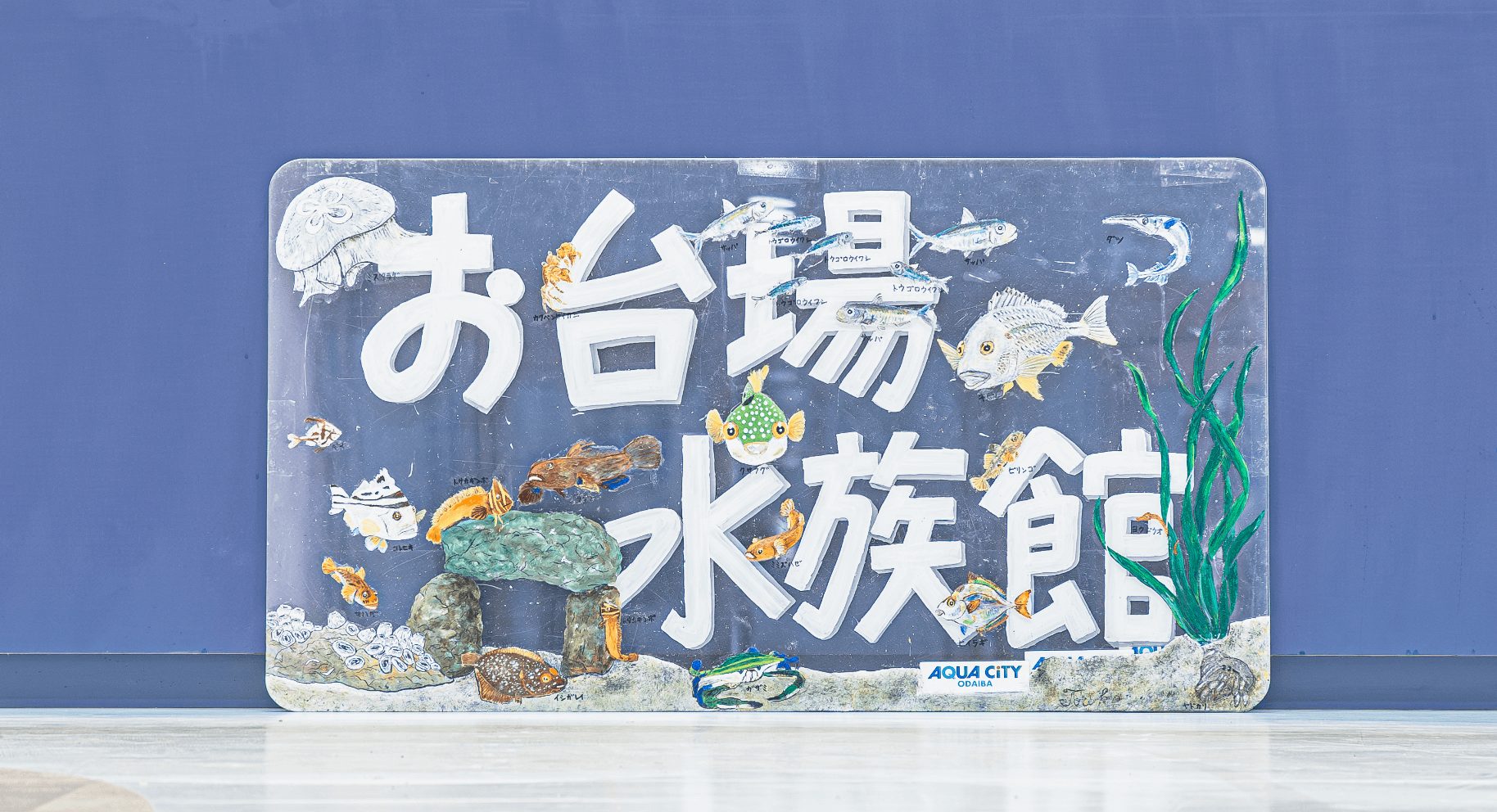 The sign for Odaiba Aquarium was made by Eda using upcycled acrylic partitions that had been used during the COVID-19 pandemic.
The sign for Odaiba Aquarium was made by Eda using upcycled acrylic partitions that had been used during the COVID-19 pandemic.
Photography: Hiromi Haruna
Like this article?

